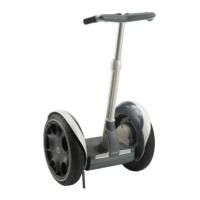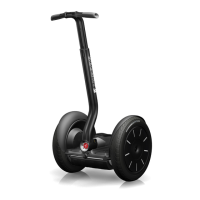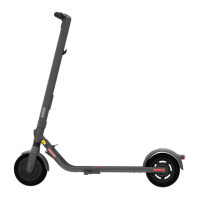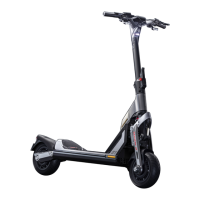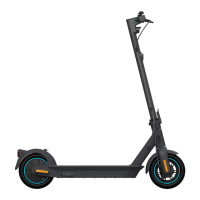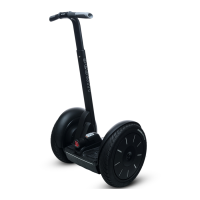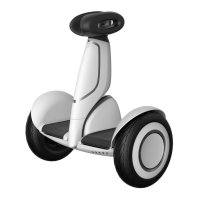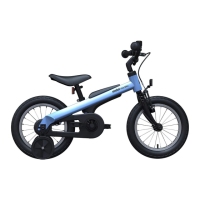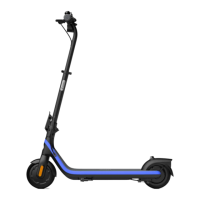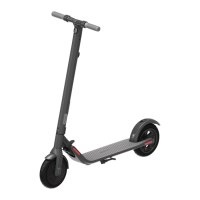Page 66 of 106 Basic Rider Optimization Training for the Segway HT
Instructor Guide and Participant Workbook Rev 3.5i - January 2004
© Segway LLC 2002 P/N 1707100001aa
> Be prepared to increase forward lean to ride up incline.
Single Wheel Terrain Features (Potholes)
Discuss the fact that most downtown/city riding environments have many potholes and curb cuts.
These pose a challenging environment that may cause over-confident riders to ignore the potential
problems.
Illustrate the lateral instability that tends to happen when you hit a pothole going at a little speed.
Reinforce the need to go through curb cuts squarely and with caution, and NOT to stop in a hole,
and then attempt to start moving again. If you stop in a hole, to be safe, you must get off the Segway
HT and pull it out of the hole onto flat ground before continuing to ride.
Avoid single wheel terrain features. Riding over a pothole, rock or slippery surface with one wheel
may cause the Segway HT to turn suddenly. This may lead to a loss of stability. These situations
can make the HT trip, just like a person.
For example, a person may trip if she unexpectedly hits an obstacle with her foot or steps into a hole
or off a curb. The person leans forward, expecting to take a normal stride, but the obstacle, hole, or
curb prevents her leg from moving as expected, and she trips. The Segway HT can trip in the same
way. If a Segway HT wheel runs into an obstacle, wall, hole, or off a curb or step, the Segway HT
might not be able to move as necessary to stay upright, and the Segway HT and rider could fall. To
be safe, you must avoid riding into holes, walls, other obstacles, or into or off curbs or steps.
If you cannot avoid single wheel terrain features, use the following guidelines:
> Step off and use Power Assist Mode if there is any question about your ability to ride over the
terrain.
> If riding, look ahead and anticipate terrain features, keep arms, legs bent, relaxed, hands loose to
avoid twisting the Steering Grip.
> If riding, lean uphill to absorb the impact with your knees and body.
Instruct riders to:
> Ride off obstacle squarely.
> Be prepared for lateral instability.
> Bend knees and absorb the shock of landing.
> Shift weight to upper foot while coming out of the hole.
> Slowly ride off curb.
> Instructor should closely spot the rider on the initial attempts.
Conduct an open discussion on other obstacles to avoid. Encourage the group to think of things that
could be dangerous to ride and should not be ridden over/under/on/through including puddles (you
never know how deep they might be or what is on the bottom), fire hydrants, tree limbs, overhead
street signs, tree roots, a garden hose, cabling, rebar, chain, frost heaves, loose sand, metal plates
and grates, etc.
Summary
Review your experiences.
Discuss the capabilities of the rider and the Segway HT.
Explain how the environment affects your capabilities.
Discuss characteristics of Segway etiquette.
